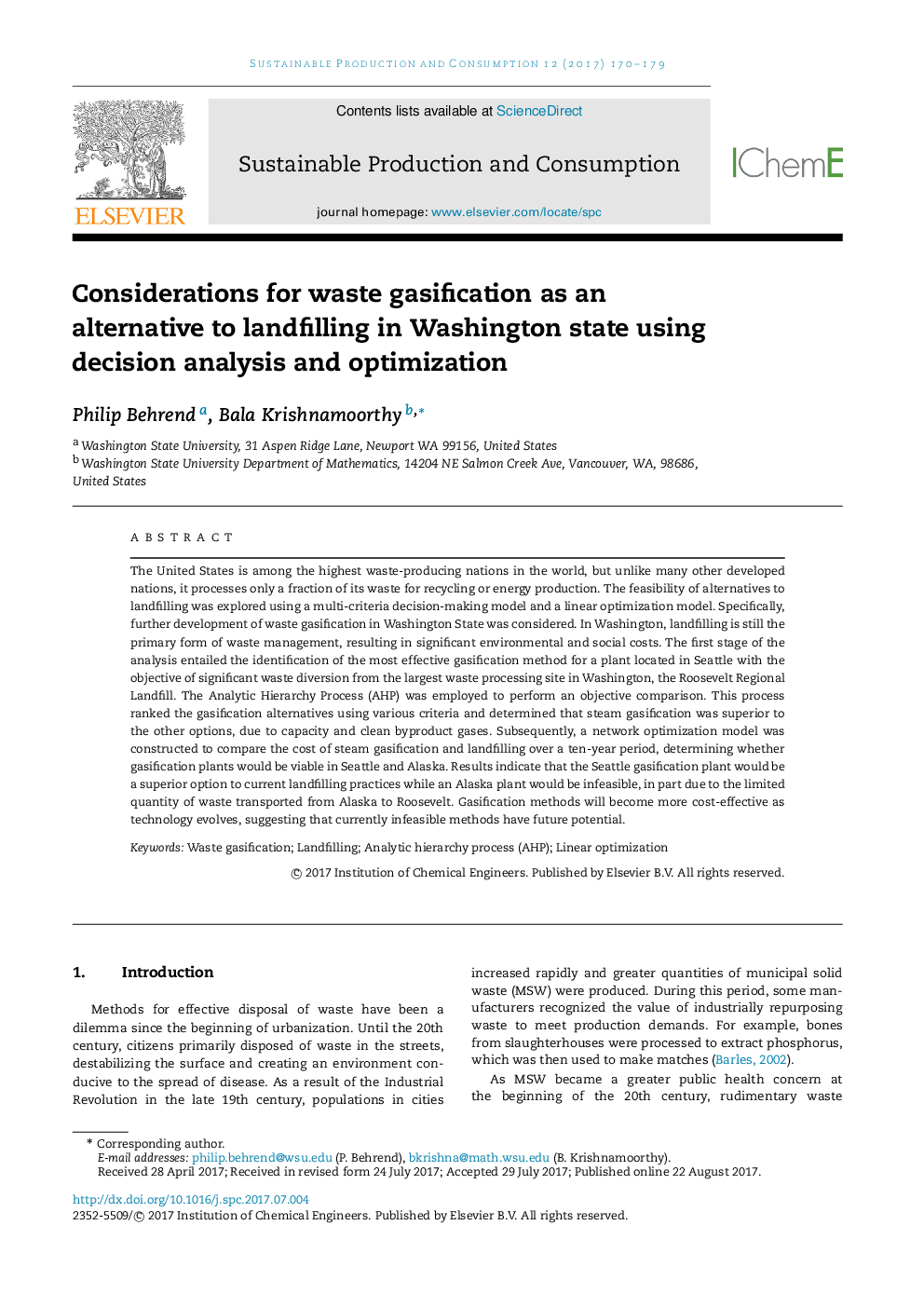| Article ID | Journal | Published Year | Pages | File Type |
|---|---|---|---|---|
| 4999493 | Sustainable Production and Consumption | 2017 | 10 Pages |
Abstract
The United States is among the highest waste-producing nations in the world, but unlike many other developed nations, it processes only a fraction of its waste for recycling or energy production. The feasibility of alternatives to landfilling was explored using a multi-criteria decision-making model and a linear optimization model. Specifically, further development of waste gasification in Washington State was considered. In Washington, landfilling is still the primary form of waste management, resulting in significant environmental and social costs. The first stage of the analysis entailed the identification of the most effective gasification method for a plant located in Seattle with the objective of significant waste diversion from the largest waste processing site in Washington, the Roosevelt Regional Landfill. The Analytic Hierarchy Process (AHP) was employed to perform an objective comparison. This process ranked the gasification alternatives using various criteria and determined that steam gasification was superior to the other options, due to capacity and clean byproduct gases. Subsequently, a network optimization model was constructed to compare the cost of steam gasification and landfilling over a ten-year period, determining whether gasification plants would be viable in Seattle and Alaska. Results indicate that the Seattle gasification plant would be a superior option to current landfilling practices while an Alaska plant would be infeasible, in part due to the limited quantity of waste transported from Alaska to Roosevelt. Gasification methods will become more cost-effective as technology evolves, suggesting that currently infeasible methods have future potential.
Related Topics
Physical Sciences and Engineering
Chemical Engineering
Process Chemistry and Technology
Authors
Philip Behrend, Bala Krishnamoorthy,
